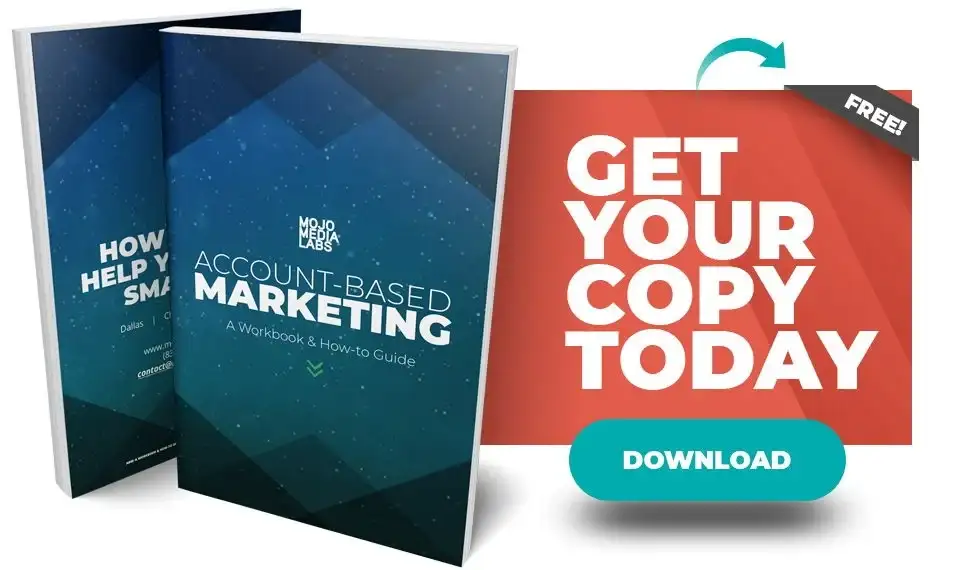Select and Segment Your ABM Target Account List
When selecting and segmenting your Target Account List (TAL), it helps to have a different list on-hand — a step-by-step checklist to segmentation success. To create the best target account list, follow these four main steps: Build, Secure, Verify + Iterate, and Update. We'll dive into the details of each in this chapter of the account-based marketing story, but just keep these in mind as you proceed. First, let's talk about how to build your target account list.


Build Your Target Account List
Arguably the most important step in the process is establishing list ownership. Account-based marketing thrives on full organizational alignment and accountability, so designating a list owner creates a point of contact for the organization as you move through the ABM process. This person will engage in all stages of the list's lifecycle and serve as the liaison to the ABM leadership team.
After selecting the list owner, it's time to dive into the tools you might use to determine how you will build the list. What will be your approach and what tools are available to you to determine target accounts. Three of the most useful tools in the process include:
- Your CRM
- Data Augmentation Tools
- Predictive Tool
Your CRM has current contact and account information from which you can glean successful account traits. The addition of data augmentation and predictive tools allows you to expand on those current key accounts and generate target accounts with similar probability for success. Remember, this is a strategic process. It is not an exercise in the ideal, dream account. This segmentation exercise of targeting specific accounts will be based on facts, events, and data.
Additionally, it's important to remember that while predictive tools are commonplace in ABM programs, they would not be successful without the CRM data and insights you currently have to fuel their predictive algorithms. Therefore, it's critical to look inward before depending solely on a predictive tool to do your digging. This is where your Ideal Customer Profile will help direct expansion tactics and guide your internal CRM search and external predictive account targeting tools.
You should also look to your marketing resources and data you are familiar with and create a hypothesis based on traditional marketing and web metrics to help drive list creation before it goes to Sales and Leadership. Overall, the accounts you choose should be currently affecting or have a high probability of affecting business growth in revenue, average deal size, and funnel velocity.
From Total Accessible Market to Top Accounts
While Total Accessible Market, or TAM, is a great place to start when assessing target accounts, your key target accounts should not solely exist in the TAM sphere of your business. These accounts could purchase from you, but should they really bite the bullet? They might have a volatile revenue stream, no potential for upselling, or lack long-term goals. These accounts will participate in peripheral engagements with little to no personalization, including ebook downloads, short meetings at tradeshows, and webinar attendance.
Moving past the TAM, you will gain insights into your Target Market. These accounts have more potential for long-term success compared to the Total Accessible Market, but they will not receive the same caliber of personalized marketing as Target Accounts. The Target Market accounts should fall in line with your Ideal Customer Profile, but not all will show intent to buy. Target Market accounts will participate in the TAM-based engagement opportunities and also exist in nurture campaigns, segmented personalization such as content including basic personalization tokens or certification courses.
From the Target Market, you will determine Target Accounts, or the ICP accounts that show the most buying intent. These accounts will receive targeted tactics that are high touch and specific to those accounts. Tactics like personalized advertisements, discounts to events like webinars or speaking engagements, and the previously mentioned target account tactics reliant on segmentation and nurture sequences.
From the Target Accounts, you then decide which are the Account Executive's Top Accounts. These accounts will receive more quality attention, resources, and budget that the previous segments, making them the highest, most personalized touch accounts outside of opportunities and customers already in your funnel. The spend is higher to close AE Top Accounts, but it will be worth it since these accounts are most likely to close with long-term, high-value contracts. The tactics for AE Top Accounts includes highly personalized messaging within advertisements, your website content, direct mail, and email in addition to field activities.
As you dive into your data and determine your AE Top Accounts, these will be the foundation for your marketing-vetted target account list. You will analyze data from various points of your CRM and marketing analysis to back up your account choices, and then hand off the list for approval to Sales and Leadership.
Secure Your Starter Target Account List
Because account-based marketing only succeeds with full organizational alignment, the target account list needs to be approved by three bodies: Marketing, Sales, and Leadership, in that order. First, provide the list to Marketing. Gathering insights from the marketing team is the first step in the process. Once you've exhausted your marketing resources, Sales is the next step for approval.
Sales will provide insights into your list and how the chosen accounts relate to your business's ability to achieve its business goals and objectives while increasing revenue across the organization. Their guidance in list refinement will help you better create Sales enablement tools that we'll discuss in the next chapter. After Sales works with Marketing to refine the list, Leadership will give the list a final check, assess its potential to increase business revenue, contract value, and pipeline velocity.
Once Leadership has provided buy-in, it's time to launch and iterate! But before that, there's one final step to securing your starter list: Giving the list a name. By giving the list a name, it makes the list real and easy to reference by all members of the organization. Remember, alignment is key for ABM success, so even something as simple as giving the target account list a name everyone can reference around the organization creates cohesion among the teams and keeps everyone on the same track.
Verify and Iterate, Post-ABM Launch
Account-based marketing at its core is a scalable strategic approach to hitting business goals as one team. As you attempt to see which accounts are performing, which are duds, and decide how to optimize your list, there are a few ways to keep everyone active in the process.
Sales, Marketing, and Operations Tasks
By setting tasks for each of the departments that play to its strengths, it helps everyone perform at their best when optimizing and scaling the ABM target account list. This keeps everyone informed and communicative.
For Sales, the tasks they need to perform include field tactics, engaging with the target accounts digitally by performing follow-ups, and creating face-time opportunities whenever possible. It will also be the job of Sales to keep notes on account performance and what enablement tools are aiding them most.
Marketing's job is to create and optimize sales enablement tools and update creative content as necessary to ensure Sales can perform its duty to the best of its abilities and the digital components of the ABM program do their job as well, whether those be personalized ads or nurture segmentation.
Operations plays a key role in overall reporting on progress. They will help Sales and Marketing see the gaps in their own work in an accessible report that can be understood by all areas of the business. How the accounts perform overall will be critical for Sales, Marketing, and Leadership to understand as they continue to iterate and scale the list to best achieve business goals.
What's the "Right" List Size?
While this is the most frequently asked question in the account-based marketing process, it does not have a clear answer. It would be great to be able to suggest a list size for companies based on any number of criteria, but that perfect list size must be determined internally through collaborative meetings where Sales and Marketing discuss existing territories, new territory suggestions, sales team capacity, marketing capacity, close rates, and sales cycles, just to name a few criteria.
Discussing these details as they exist before ABM implementation will help you iterate in the long run and not bite off more than you can chew at any point in your ABM journey.
Consider capacity first, then grow with your ABM program as it increases business revenue and allows that growth to happen. The answer is subjective, but it's honestly for the best.
Updating Your List
Updates might seem cumbersome, but with consistent vigilance from Sales, Marketing, and Operations to measure target account success, you will find a balance that creates measurable metrics but also allows for change. Remember, ABM is a long-term investment, so changing the list immediately after implementation is not the best idea. There are two categories of update criteria to assess:
Major Updates: Fundamental business changes including new funding, executives, and market shifts will require you to take a look at your list and decide how to adapt. These will need to be addressed annually when updating your list.
Minor Updates: Territory changes and new product offerings can result in quarterly updates as they relate to target accounts that would or would not benefit from these changes.
Let Your Target Account List Grow With You
Overall, it's key to remember the target account list is a strategic, scalable, living thing within your ABM program that should grow alongside your account-based marketing successes. As you grow your average contract size, increase revenue, and improve pipeline velocity, you will see room for expansion of your target account list and better data to use within predictive tools that can aid that expansion. Keeping Sales, Marketing, and Operations involved through task delegation and constant communication make the process much easier as the time to iterate and update does come, but it's always important to give your target account list time to perform.

Sign up for The Weekly Mojo, our weekly newsletter with the best digital marketing content delivered right to your inbox.
Get Your Weekly Mojo


